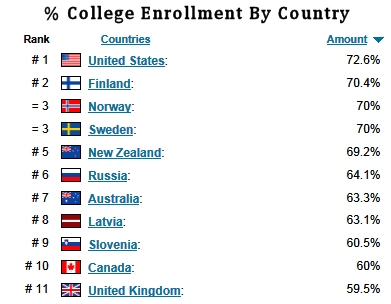It’s no secret that the United States has some of the largest amounts of students who attend a college or university. According to NationMaster almost 73% of American High School students go on to college within 5 years of graduation. However, it is becoming increasingly difficult to finance a four year degree or beyond. In 2011, two-thirds of graduates had some form of student loan debt averaging $26,600 per student. Students need to weigh the costs versus the benefits and find ways to keep their debt as low as possible.
New Proposals in Congress

Changes to The Federal Loan Program
There are several major changes to the federal loan program that will affect the finances of students after graduation. “Going forward, the whims of Washington politicians won’t dictate student loan interest rates, meaning more certainty and more opportunities for students to take advantage of lower rates,” House Speaker John Boehner said. Earlier this year, the House passed legislation that is similar to what the Senate later passed. Both versions link interest rates to 10-year Treasury notes and remove Congress’ annual role in determining rates. The new bill indexes interest rates on federal student loans to the rate on the 10-year Treasury note, plus an additional 2.05%. The 10 year treasury note rate closed yesterday at 2.58% so the combined interest based on yesterday’s rate would be 2.58% + 2.05%= 4.63%.
But undergraduates this fall will still be able to borrow at a 3.9 percent interest rate for subsidized and unsubsidized loans. Graduate students would have access to loans at 5.4 percent, and parents would borrow at 6.4 percent. The rates would be locked in for that year’s loan, but each successive year’s loan will be determined based on the prevailing rate at that time.
Senate Version Adds Cap
The Senate version added a cap on interest rates for undergraduates of 8.25%. Graduate students have a cap of 9.5%, and parents’ rates would top out at 10.5%. But these are maximum limits and not expected any time soon since market based rates are considerably lower at this point and are not expected to reach these levels in the next decade.
It Took Time For Congress to Act
Since July 1, 2012, student loans were in limbo because Congress had failed to act thus rates had defaulted to higher levels. These were 6.8% for direct subsidized and unsubsidized loans (undergraduate students), 7.9% for Direct PLUS Loans (Parents and Graduate or Professional Students), and 5% for Perkins Loans (Undergraduate and Graduate or Professional Students).
Difficulty Getting A “PLUS Loan
Parents or graduate students may apply for PLUS loans that come with a 7.9 percent fixed rate. However, since these loans must be underwritten, a person must have a clean credit history. This is why many people are being denied. Anyone who cannot receive a PLUS loan may qualify for a different private loan.
See Also:
- An Update On US Student Loan Interest Rates
- Dealing with Student Loan Debt and Bankruptcy
- The Quickest Ways to Pay Off Your Student Loan
- Sky Rocketing College Costs
- 8 Steps to Cut Education Costs
Resources:
Image courtesy of Stuart Miles / FreeDigitalPhotos.net


